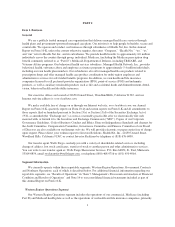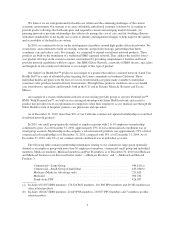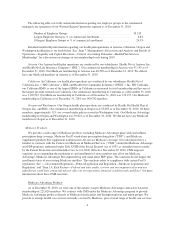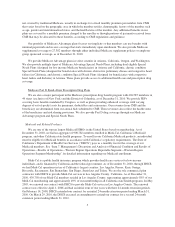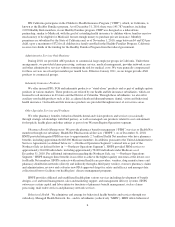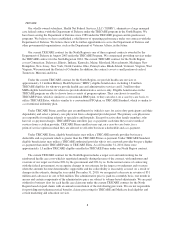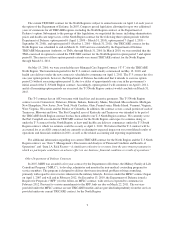Health Net 2010 Annual Report Download - page 4
Download and view the complete annual report
Please find page 4 of the 2010 Health Net annual report below. You can navigate through the pages in the report by either clicking on the pages listed below, or by using the keyword search tool below to find specific information within the annual report.in Arizona, California, Oregon and Washington, and the operations of our behavioral health and pharmaceutical
services subsidiaries in several states, including Arizona, California and Oregon. As of December 31, 2010, we
had approximately 2.5 million risk members and 0.4 million Medicare stand-alone Part D members in our
Western Region Operations segment.
Managed Health Care Operations
We offer a full spectrum of managed health care products and services. Our strategy is to offer to employers
and individuals managed health care products and services that, among other things, provide comprehensive
coverage and manage health care costs. The pricing of our products is designed to reflect the varying costs of
health care based on the benefit alternatives in our products. Our health plans offer members coverage for a wide
range of health care services including ambulatory and outpatient physician care, hospital care, pharmacy
services, behavioral health and ancillary diagnostic and therapeutic services. Our health plans include a matrix
package, which allows members to select their desired coverage from a variety of alternatives. Our principal
commercial health care products are as follows:
•HMO Plans: Our HMO plans offer comprehensive benefits for a fixed fee or premium that does not
vary with the extent or frequency of medical services actually received by the member. These plans are
offered generally through contracts with participating network physicians, hospitals and other
providers. When an individual enrolls in one of our HMO plans, he or she may select a primary care
physician (“PCP”) from among the physicians participating in our network. PCPs generally are family
practitioners, general practitioners or pediatricians who provide necessary preventive and primary
medical care, and are generally responsible for coordinating other necessary health care services,
including making referrals to participating network specialists. We offer HMO plans with differing
benefit designs and varying levels of co-payments that result in different levels of premium rates. In
California, participating providers are typically contracted through medical groups. In those cases,
enrollees in HMO plans are generally required to secure specialty professional services from
physicians in the group, as long as such services are available from group physicians.
•PPO Plans: Our PPO plans offer coverage for services received from any health care provider, with
benefits generally paid at a higher level when care is received from a participating network provider.
Coverage typically is subject to deductibles and co-payments or coinsurance.
•POS Plans: Our POS plans blend the characteristics of HMO, PPO and Indemnity plans. Members can
have comprehensive HMO-style benefits for services received from participating network providers
with lower co-payments (particularly within the medical group), but also have coverage, generally at
higher co-payment or coinsurance levels, for services received outside the network.
We assume both underwriting and administrative expense risk in return for the premium revenue we receive
from our HMO, POS and PPO products. We have contractual relationships with health care providers for the
delivery of health care to our enrollees in these products.
In California, we utilize a “capitation” fee model. Under a capitation fee model, we pay a provider group a
fixed amount per member on a regular basis and the provider group accepts the risk of the frequency and cost of
member utilization of professional services. By incentivizing providers to focus on cost management, members
are more likely to receive only those services that they actually need rather than extraneous services that drive up
costs without any meaningfully corresponding health benefits. See “—Provider Relationships” for additional
information about our capitation fee arrangements. As of December 31, 2010, more than 80% of our California
membership was enrolled in capitated medical groups. In addition, a significant portion of our Medicare and
Medicaid businesses are linked to capitated provider groups.
As of December 31, 2010, with respect to our Western Region Operations segment, 59% of our commercial
members were covered by conventional HMO products, 39% were covered by POS and PPO products, and 2%
were covered by other related products.
2



